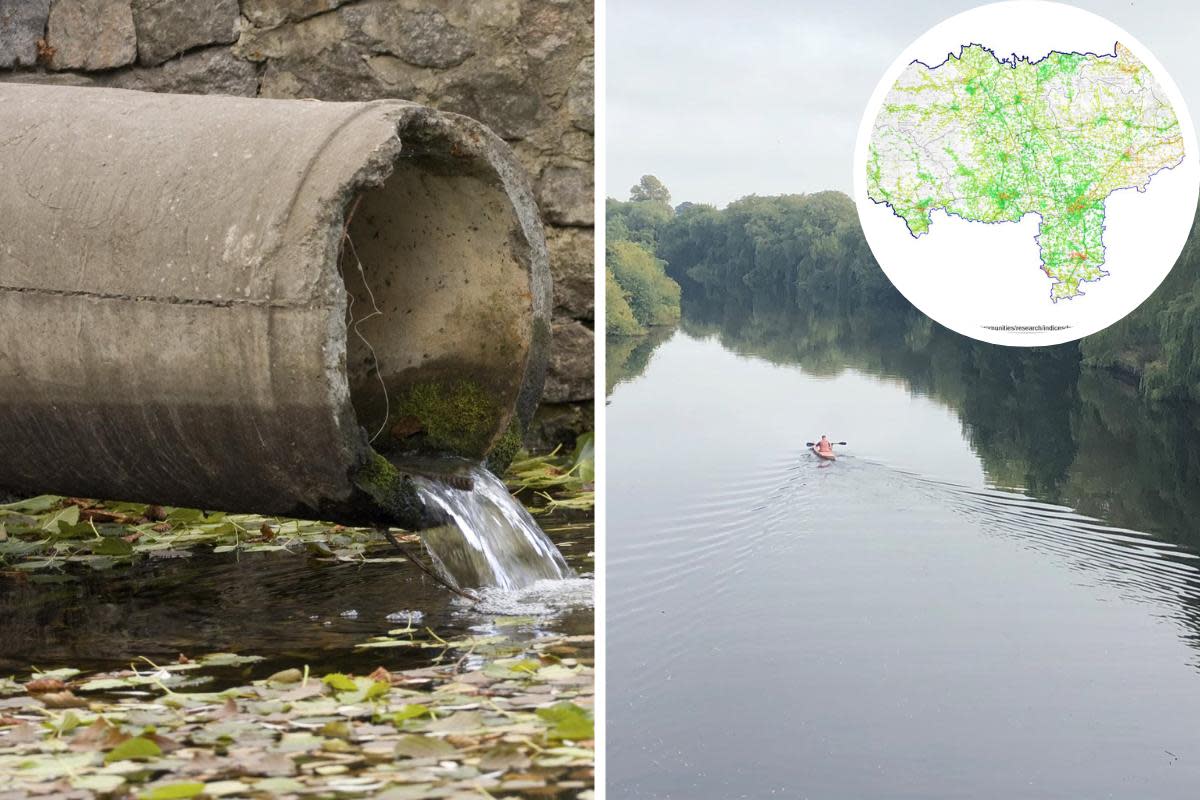New figures show North Yorkshire area tops chart for potential water pollution

CANDIDATES running in Thursday’s general election in North Yorkshire could win in constituencies that rank in the top 10 for potential water pollution, an investigation has found.
Data analysis has been carried out by investigative journalism platform Watershed on UK waterways from official sources such as the Environment Agency as well as water companies and its own water testing.
The figures cover pollution risks from sources like sewage spills, nitrates, contamination from landfill sites and levels of PFAs – known as “forever chemicals” due to the long time they take to break down in the environment.
Read next:
Children’s book written in York could be read in war-torn country’s schools
Arrest made after six motorbikes stolen in York
Story of world-famous guidebook and author's achievements in North Yorkshire talk
The researchers then combined these into a major interactive map that shows tens of thousands of ecological and chemical threats to individual waterways, rivers, coasts and lakes across Great Britain.
They also calculated a standardised “environmental health score” for each constituency based on the pollution threats indicated by the analysis.
The majority of the top 10 constituencies for poor environmental health were located in the north of England, according to the findings.
Thirsk and Malton in North Yorkshire came joint highest in Watershed’s table, with Skipton and Ripon in joint fifth.
In joint seventh were Selby, and Wetherby and Easingwold.
The scores were adjusted for population and constituency size so that areas with more rivers or surface area were not unfairly penalised for being bigger than others.
Researchers said the map and data will continue to evolve over time, adding it currently may not show a complete picture.
'We are committed to playing our part to reducing the impact of our operations on our rivers and coastal areas'
Some constituencies may have scored better – due to having little or no scores in some of the areas of measurement – such as not being a nitrate vulnerable zone, no sampling of PFAs having taken place in the area, or having no river length at all.
The Environment Agency is quadrupling its number of water company inspections and says 100 per cent of storm overflows are now monitored in England.
And a cap on civil penalties for environmental offences has been removed, along with steps taken to make it easier for internal whistleblowers to safely report wrongdoing.
The agency said £60 billion is to be invested over 25 years to ‘revamp ageing assets’ and reduce the number of sewage spills by hundreds of thousands every year.
A spokesperson for Yorkshire Water said: “As this research points out, there are a number of sources impacting water quality in our region's waterways.
We are committed to playing our part to reducing the impact of our operations on our rivers and coastal areas.
We are making headway with a £180m programme to reduce discharges across the region, by April 2025, as well as delivering a £500m programme to reduce Phosphorus entering watercourse across the region to improve water quality.
This is just the start of a long-term programme to reduce the impact of wastewater on the region’s watercourses and we have submitted plans to Ofwat that outline our largest ever environmental investment between 2025 and 2030.”
Britain’s water pollution crisis has become a major topic during the campaign, with the Labour Party and the Liberal Democrats ramping up attacks on the “Conservative sewage scandal” last week.
Campaigner Feargal Sharkey, who is on the advisory board at Watershed, was in York yesterday to meet a York woman who had to wade through sewage to reach her houseboat.
Anger has been growing over the polluted state of England’s rivers and coasts in recent years, with no single stretch of river classed as being in a good overall condition, and hundreds of pollution risk alerts issued for popular beaches around the country last year.
Data from the Environment Agency for 2023 shows a 54% increase in the number of sewage spills compared with 2022, and a 13% increase compared with 2020.
The map can be found at: https://watershedinvestigations.com/home/find-out-whats-polluting-your-local-rivers-lakes-and-coast/

 Yahoo News
Yahoo News 
